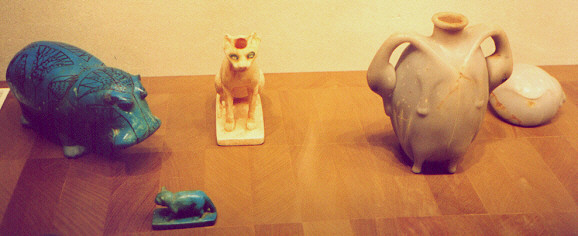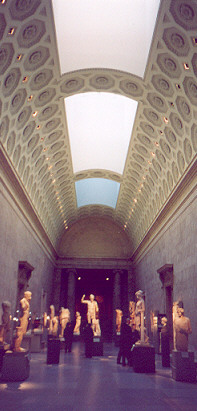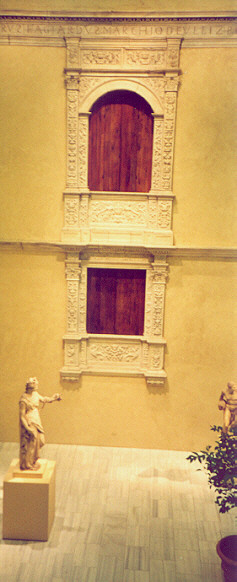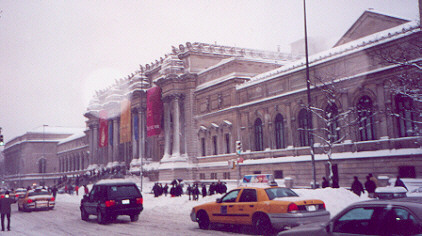
The Met Museum is the largest museum in the Western hemisphere. I originally scheduled a whole afternoon [!] to see the exhibits. I eventually visited the museum three times and still only glimpsed what was available. The phrase 'So much to see and so little time in which to see it' was never so appropriate. The temporary exhibitions took priority. The Met celebrated the start of the new millennium with an exhibition of items that were created around Year One. It was very educational and I was interested to read of the many different cultures that existed around the world when Jesus was born. The exhibition of New-York, the Empire city showed a city I was familiar with from reading the novels of Henry James and Edith Wharton. I enjoyed learning more about the Knickerbocker artists and writers [these included the authors James Fenimore Cooper and Washington Irving and the artist/inventor Samuel B Morse]. One of the artists in this group, Robert Walker Weir, contributed to the image of Santa Claus when he painted 'A Visit from Saint Nicholas' in 1837. Anyway, gentle reader, more about this another time. I appreciate you're here to see the photos. I will just say that you should buy a membership of the Met and spend every morning at the museum to see the incredible collection of Impressionist, Renaissance, American, and European paintings. Not to mention, but I shall, the Arms and Armour, Egyptian, sculptures, courtyards and gift shops scattered throughout the building.
|
|
|
|
It is surprisingly difficult to track down the Egyptian faience known as William. He sits in a glass case in one of the rooms in the Egyptian exhibitions. Ask a curator for directions. William was made around 1900 B.C. during the 12th Dynasty. |
|
The Temple of Dendur dates from 12 B.C. and was gifted to America by Egypt in appreciation of loan aid when the Aswan High Dam was being created. The temple was frequently covered by water when the Nile flooded but it would have been permanently lost when the dam was built. The Met had to fight for the temple and constructed a new room, looking onto Central Park, to accommodate the edifice. The Met has the largest collection of Egyptian artifacts outside Egypt. |
|
|
|
These columns date from 1905 are all that remain of Louis Tiffany's house on Long Island. It burned down in 1957. Each of the exotic capitals shows a different flower. From left to right: East Indian lotuses, dahlias, oriental poppies, and saucer magnolias. The Met has a large collection of Tiffany glass, some of which can be glimpsed behind the columns. |
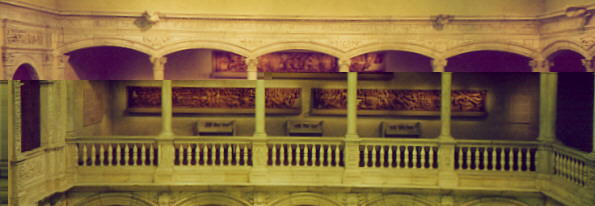 |
|
